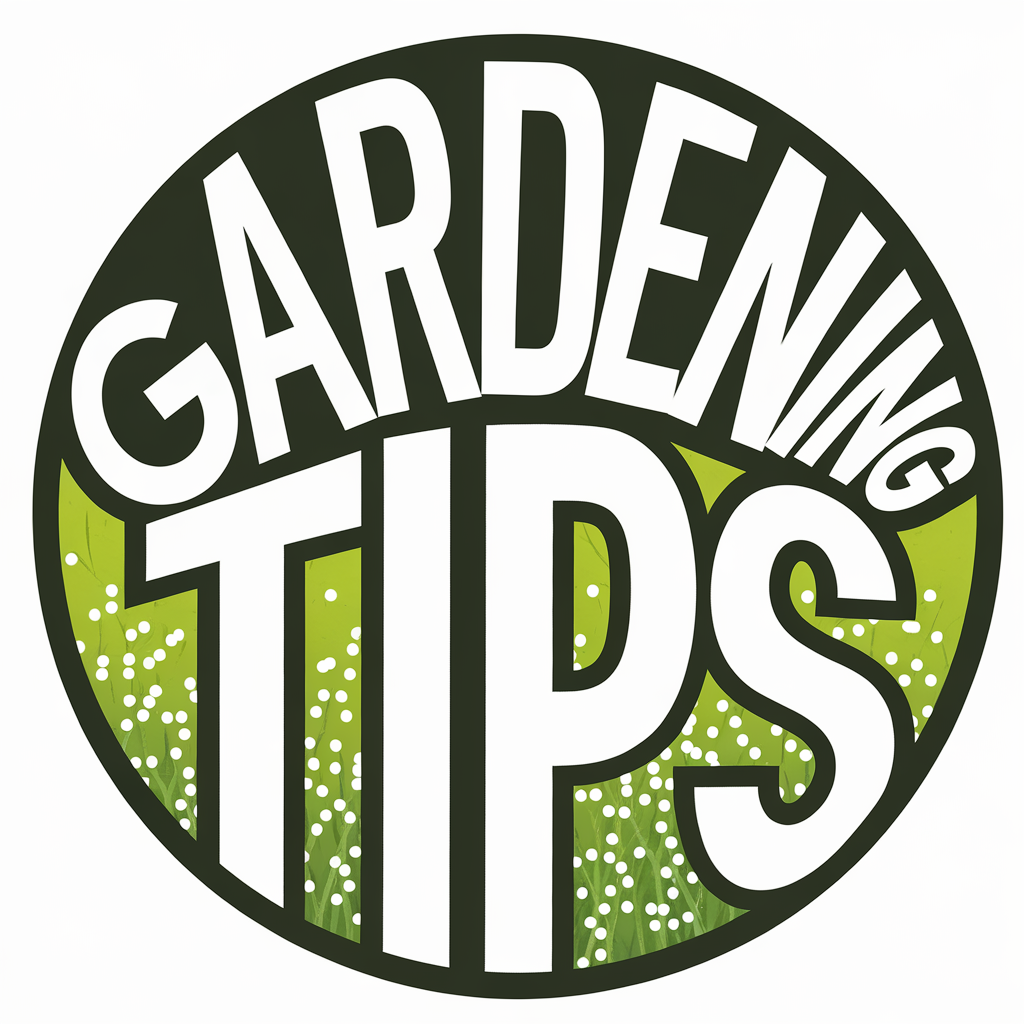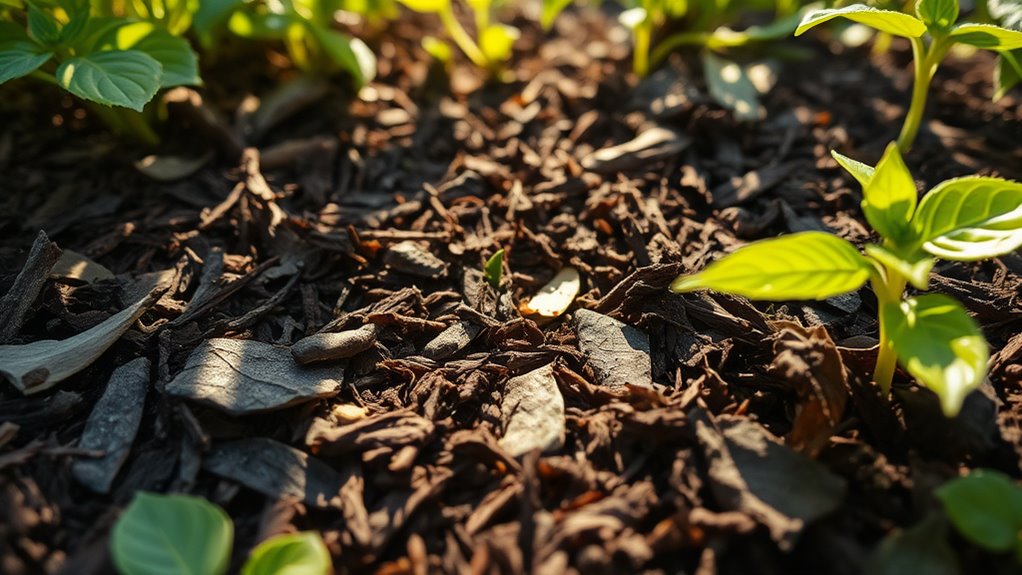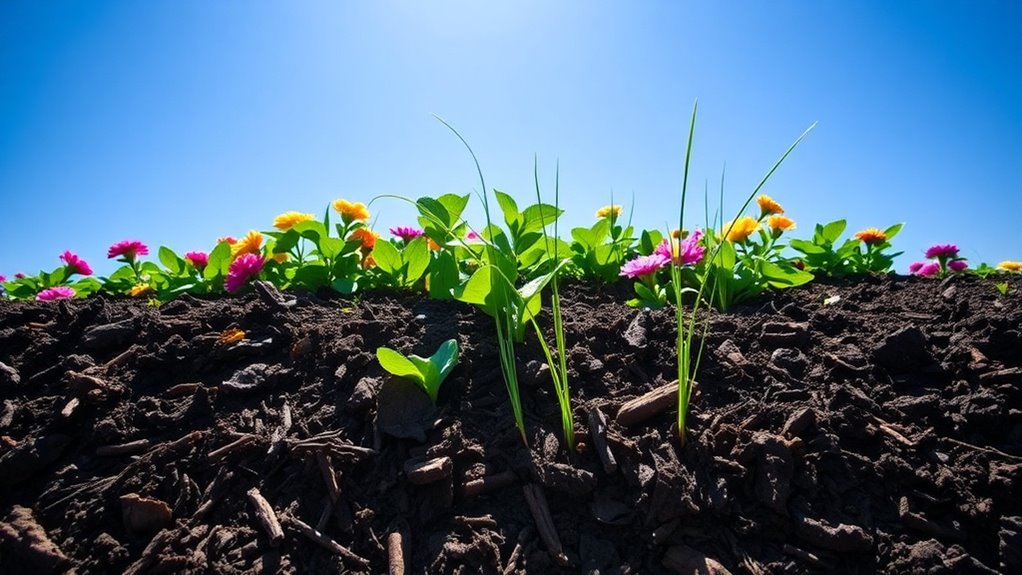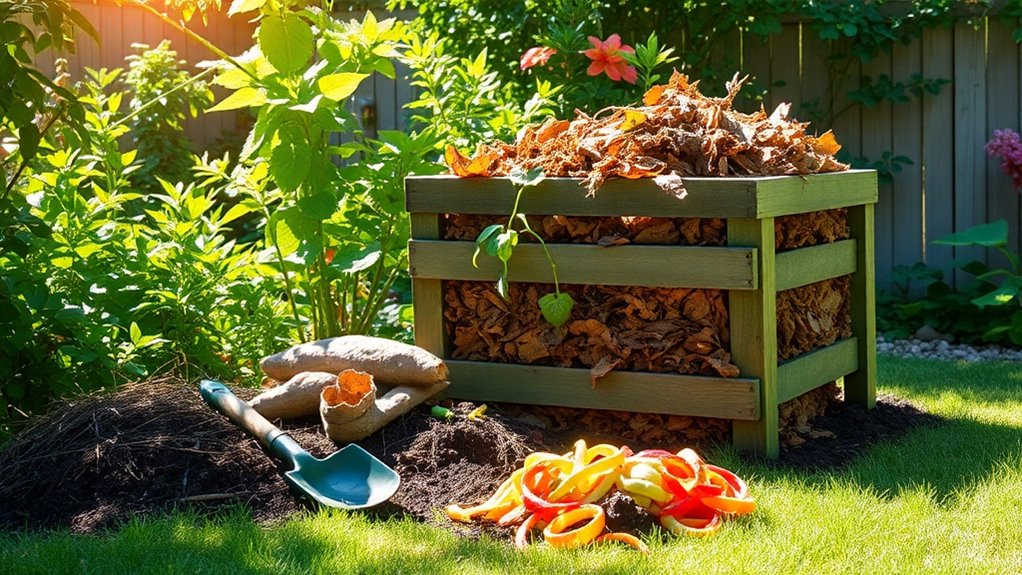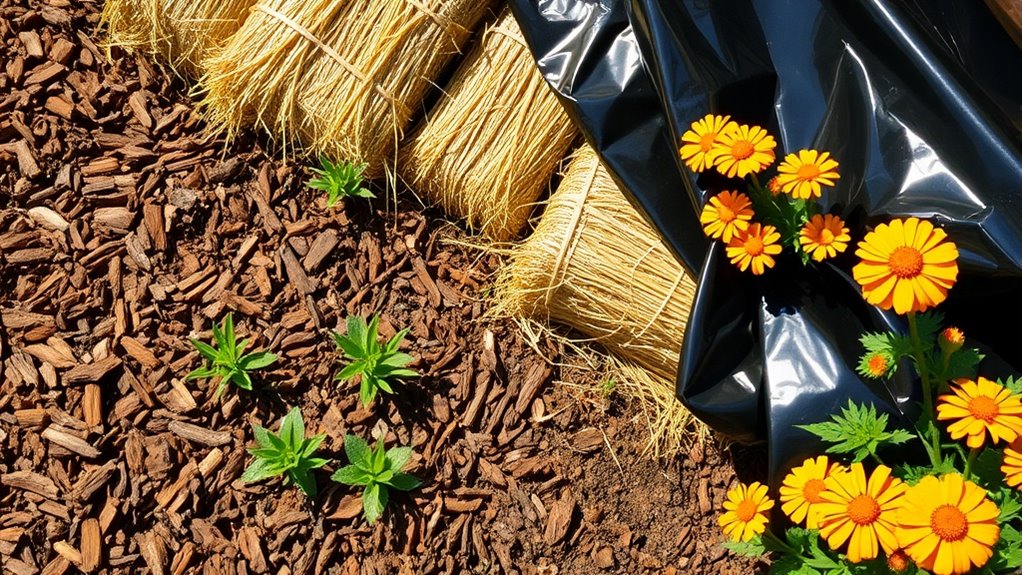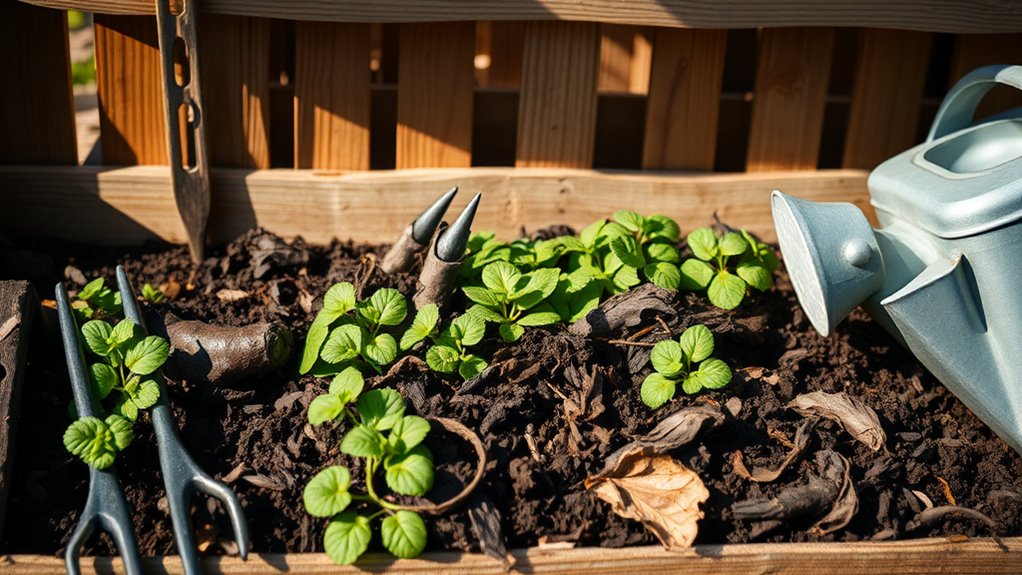The Organic Mulch That’s Better Than Store-Bought
Homemade organic mulch is better than store-bought options because it offers tailored nutrients and enhances soil health while reducing waste. By using materials like leaves and grass clippings, you create a nutrient-rich layer that retains moisture and suppresses weeds. It’s cost-effective, saving you money and promoting sustainability by repurposing kitchen scraps and yard debris. Plus, you can customize it to meet your garden’s specific needs. Discover how to create and apply your own organic mulch for best results.
Benefits of Homemade Organic Mulch
Homemade organic mulch offers several advantages that can enhance your gardening experience.
By using organic materials like leaves, grass clippings, or kitchen scraps, you create a nutrient-rich layer that improves soil health.
This organic mulch retains moisture, reducing the need for frequent watering and promoting healthier root systems.
Additionally, it helps suppress weeds, allowing your plants to thrive without competition.
As it breaks down, homemade organic mulch enriches the soil with organic matter, fostering beneficial microorganisms.
You’ll notice your garden flourishing with improved structure and fertility, making your efforts more rewarding and environmentally friendly.
Embrace the benefits of homemade organic mulch, as it can significantly contribute to improved soil health and the overall vitality of your garden.
Cost-Effectiveness of DIY Mulch
Creating your own mulch can lead to significant savings on materials since you can utilize items already available in your yard or kitchen. Additionally, making mulch at home helps reduce waste disposal costs, as you’re repurposing organic materials that might otherwise end up in a landfill. Using effective mulching techniques can further enhance your garden’s growth and size.
Savings on Materials
Making your own organic mulch can lead to significant savings on materials, especially when you consider the costs associated with store-bought options.
Store-bought mulch can range from $3 to $10 per bag, depending on the type and quality.
By using readily available resources like leaves, grass clippings, or wood chips, you can create effective mulch for little to no cost.
Additionally, sourcing materials from your yard or local community not only reduces expenses but also promotes sustainability.
Ultimately, DIY mulch allows you to manage your budget while enhancing your garden’s health, making it a smart choice for any gardener.
Reduced Waste Disposal
Reducing waste disposal is a compelling reason to opt for DIY mulch. By using kitchen scraps and yard debris, you not only save money but also minimize landfill contributions. This approach transforms waste into a resource, making gardening more sustainable.
| Material Type | Waste Reduction (%) | Cost Savings ($) |
|---|---|---|
| Kitchen Scraps | 30% | 10 |
| Yard Debris | 40% | 15 |
| Cardboard/Paper | 20% | 5 |
This table illustrates how utilizing common waste materials can substantially impact both your budget and environmental footprint.
Environmental Advantages of Organic Mulch
Organic mulch offers a multitude of environmental benefits that can greatly enhance your garden’s ecosystem.
By using organic materials, you reduce the need for synthetic fertilizers and pesticides, promoting a healthier habitat for beneficial insects and microorganisms.
It also conserves moisture, which reduces water usage and helps maintain local water supplies.
Additionally, organic mulch helps control erosion, protecting soil integrity and preventing sediment runoff into waterways.
Moreover, as it decomposes, it sequesters carbon, contributing to climate change mitigation.
In fact, fall mulching is particularly beneficial as it prepares your garden for winter while enhancing soil health.
Embracing organic mulch not only supports your garden’s health but also fosters a more sustainable environment for future generations.
Improving Soil Health With Homemade Mulch
Creating homemade mulch offers numerous benefits for your garden, including improved soil structure and enhanced nutrient content. With simple recipes using materials like grass clippings and leaves, you can easily enrich your soil while reducing waste. Additionally, the power of mulching can help maintain consistent moisture levels in your garden, promoting healthier plant growth. Let’s explore how these homemade options can boost your garden’s health effectively.
Benefits of Homemade Mulch
Homemade mulch offers a sustainable approach to enhancing soil health, effectively nurturing your garden while minimizing waste.
By creating your own mulch, you can enjoy several key benefits:
- Nutrient Enrichment: Decomposing organic materials release essential nutrients back into the soil.
- Moisture Retention: It helps retain soil moisture, reducing the need for frequent watering.
- Weed Suppression: A thick layer of mulch discourages weed growth, lessening competition for nutrients.
- Soil Structure Improvement: Organic matter enhances soil aeration and structure, promoting healthy root development.
These advantages make homemade mulch a valuable addition to any garden.
Simple Mulch Recipes
How can you enhance your garden’s health while minimizing waste? Simple mulch recipes can transform kitchen scraps and yard waste into nutrient-rich soil enhancers.
For instance, combine shredded leaves, grass clippings, and vegetable peels to create a balanced organic mulch. Alternatively, chop up cardboard and mix it with wood chips for a slow-decomposing layer that suppresses weeds. Coffee grounds can boost nitrogen levels when sprinkled around plants.
You’ll not only recycle materials but also improve soil structure, retain moisture, and promote beneficial microorganisms. Experiment with these combinations to discover what works best for your garden’s unique needs.
How to Create Your Own Organic Mulch
Transform your garden with organic mulch by gathering materials that enrich the soil while suppressing weeds. Creating your own mulch is simple and rewarding. Here’s how you can start:
- Collect leaves: Shred fallen leaves for a nutrient-rich base.
- Utilize grass clippings: Use clippings from chemical-free lawns to add nitrogen.
- Chop kitchen scraps: Compost vegetable peels and coffee grounds for added nutrients.
- Gather wood chips: Use untreated wood chips to balance moisture retention and aeration.
Mix these materials in layers, ensuring even distribution. Additionally, incorporating kitchen scraps into your mulch not only provides nutrients but also helps in creating a healthy composting environment. Your homemade organic mulch will enhance soil health while keeping your garden thriving.
Best Materials for Organic Mulch
Choosing the right materials for organic mulch is key to maximizing its benefits in your garden. Popular options include shredded leaves, grass clippings, straw, and wood chips.
Shredded leaves decompose quickly, enriching soil while suppressing weeds.
Grass clippings provide nitrogen but should be applied in thin layers to prevent matting.
Straw offers excellent insulation and weed control, while wood chips last longer, reducing the frequency of replacement.
Consider your garden’s specific needs, like moisture retention or nutrient addition, when selecting materials. A simple ingredient swap, like incorporating shredded leaves into your mulch, can further enhance your composting process and promote healthier soil.
Each option has unique properties that can enhance soil health and promote plant growth effectively.
Tips for Applying and Maintaining Mulch
When should you apply mulch to get the best results in your garden?
Timing is vital.
Apply mulch in late spring or early summer when soil temperatures stabilize.
Here are some tips for applying and maintaining your mulch:
- Layer Thickness: Use 2-4 inches of mulch to suppress weeds and retain moisture.
- Avoid Soil Contact: Keep mulch a few inches away from plant stems to prevent rot.
- Replenish Regularly: Check your mulch every season and replenish as needed.
- Water After Application: Water the mulch to help it settle and improve moisture retention.
Additionally, using organic mulch can help address the drawbacks of store-bought soil mixes, which may not provide the necessary nutrients for your plants.
Following these steps guarantees a thriving garden!
Comparing Homemade and Store-Bought Mulch
How do homemade and store-bought mulch stack up against each other regarding benefits and drawbacks?
Homemade mulch often boasts better nutrient content and customization, allowing you to tailor it to your garden’s needs.
You’ll also save money and reduce waste by using organic materials you already have.
However, consistency and quality can vary.
On the other hand, store-bought mulch offers convenience and reliability, with consistent textures and colors.
It’s often treated for pests and diseases, which can be a significant advantage.
Ultimately, your choice depends on your gardening goals, budget, and willingness to invest time in creating your mulch.
